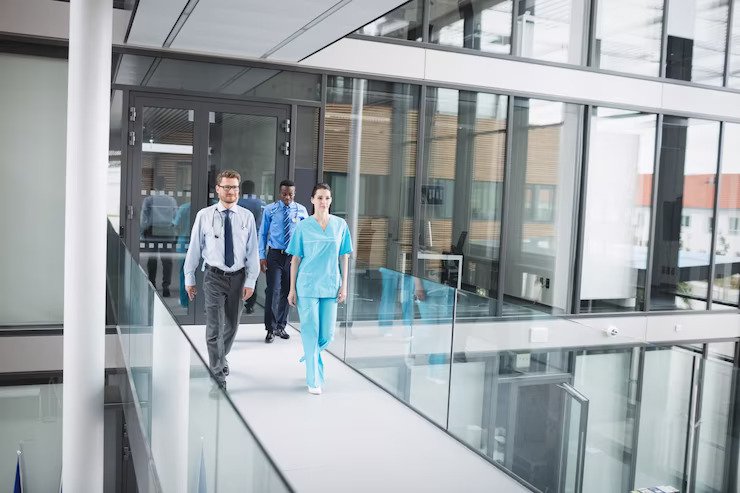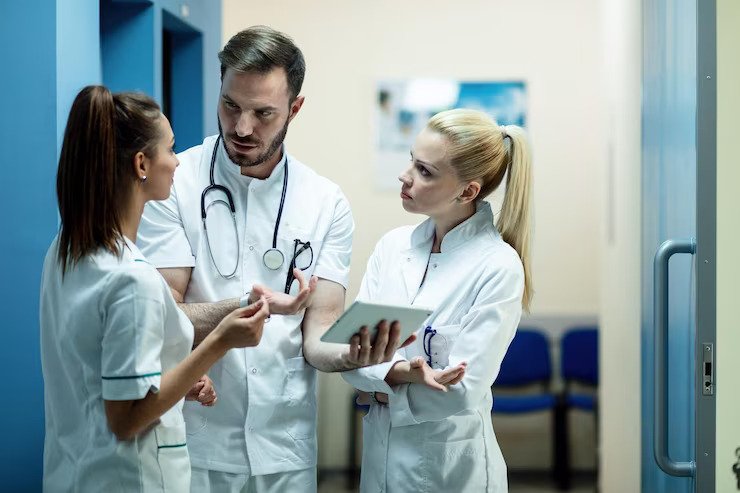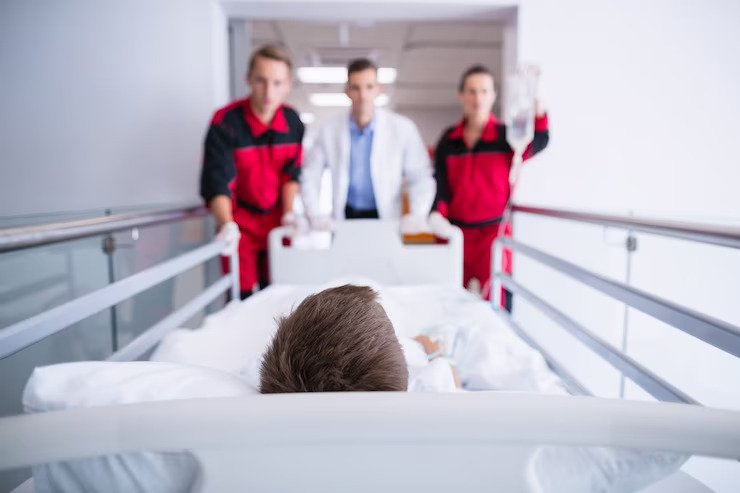10 Tips To Ensuring Emergency Preparedness In The Hospital
In hospitals, the unexpected is part of the job description.
Emergencies can happen anytime, and how we manage them makes all the difference. As a result, being prepared for crises is not an option; it is a must. The requirement for a strong system to deal with unanticipated occurrences grows in tandem with the complexity of healthcare delivery.
As overwhelming as it may seem, fear not. This blog will delve into some practical tips to ensure optimal emergency preparedness in hospitals.
Let’s get ready to tackle any challenge that comes our way!
1. Building a Resilient Hospital Infrastructure

A robust and resilient infrastructure is the backbone of emergency preparedness in hospitals. It involves ensuring the hospital building can withstand natural disasters, having backup power systems, and implementing effective IT systems. A hospital can operate efficiently even in emergencies when physically robust and technologically sound. Infrastructure resilience also includes having adequate facilities to accommodate a sudden influx of patients during crises.
For example, surge capacity planning can help hospitals handle a sudden increase in patient volume without compromising the quality of care. The National Center for Biotechnology Information suggests that designing hospitals focusing on resilience can significantly enhance emergency preparedness. So, let’s not forget to invest in building a strong infrastructure while preparing to face any emergency.
2. Prepare the crash cart
Effective hospital emergency preparedness hinges on various factors, and one invaluable tip is properly organizing a crash cart. A well-organized crash cart is a vital resource during medical emergencies, enabling healthcare teams to respond swiftly and efficiently.
By stocking and arranging the cart methodically, healthcare providers can minimize stress levels and response times, ultimately leading to expedited and effective patient care when time is of the essence. With the right equipment readily accessible and in its designated place, the hospital team can confidently handle critical situations, enhancing patient safety and optimizing the overall functioning of healthcare services.
3. Regular Staff Training
A significant part of emergency preparedness revolves around regular staff training. It’s crucial for every hospital staff member, from doctors and nurses to administrative staff, to know their role when an emergency strikes.
Training programs should be designed to update staff with the latest procedures, protocols, and lifesaving techniques. Remember, a well-trained team can make a substantial difference during emergencies, potentially saving lives and reducing patient recovery time.
4. Having an Updated Emergency Plan
An updated and comprehensive emergency plan is a fundamental component of emergency preparedness. This plan should detail the responsibilities of every staff member, a protocol for different emergencies, and evacuation routes, among other things.
Also, it should be flexible to adapt to the unique challenges of each emergency. According to the Mayo Clinic, a well-crafted emergency plan can help prevent confusion, improve response time, and ensure patient safety during emergencies.
5. Adequate Supply of Essential Equipment

Ensuring an adequate supply of essential medical equipment is another critical aspect of emergency preparedness. This means having the necessary equipment and ensuring it’s well-organized and easily accessible.
Everything needs to be maintained, stocked up, and regularly checked for functionality, from ventilators to first aid supplies. A well-organized emergency room or a crash cart can drastically reduce response time, leading to more effective emergency care.
6. Regular Drills
You wouldn’t run a marathon without training, right? The same principle applies to emergency preparedness. Regular emergency drills are essential for staff to practice and perfect their response to various emergency scenarios.
These drills help identify potential weaknesses in the system and provide a valuable opportunity for improvement. Just as fire drills are standard in schools and offices, hospitals must conduct emergency drills routinely to ensure everyone knows their role when an emergency occurs.
7. Coordination with Local Emergency Services
Effective emergency management also requires close coordination with local emergency services like fire departments, police, and emergency medical services. This collaboration ensures a coordinated response during a large-scale emergency. Information sharing, joint drills, and collaborative planning can go a long way in managing emergencies effectively.
As per a study cited by Harvard Health, the synergistic efforts between hospitals and local emergency services have shown to be immensely beneficial in crises.
8. Incorporating Technology
The integration of technology plays a pivotal role in bolstering emergency preparedness. It assists in enhancing efficiency and response times during emergencies. Technology is a critical ally in emergency management, from electronic health records (EHRs) that provide vital patient information at the click of a button to advanced communication systems that ensure seamless coordination.
Smart devices and AI can also improve response times, streamline patient care, and predict potential emergencies.
9. Creating a Culture of Safety
Creating a safety culture within a hospital setting is an often overlooked but vital aspect of emergency preparedness. This entails instilling an attitude of safety and preparation in all aspects of the hospital’s activities.
The result is a hospital environment where staff are vigilant, proactive, and committed to ensuring the best possible outcome for every emergency. It’s not just about ticking off a checklist but creating a culture where every staff member actively participates in safety and emergency preparedness.
10. Post-Emergency Reviews and Learning

Learning from emergencies is as essential as preparing for them. Once a crisis has passed, assessing the response procedures and determining their effectiveness is imperative. Reflecting on triumphs and shortcomings can impart critical knowledge for future emergencies. These post-crisis evaluations can shed light on essential improvement areas.
For example, were there instances of postponed patient treatment? Did any communication barriers hamper the smooth operation during the emergency? Could the response have been more organized? Answers to these questions can guide improvements and training programs, further strengthening emergency preparedness.
Conclusion
By incorporating these additional strategies into your emergency preparedness plans, you’ll be better equipped to handle whatever comes your way.
And remember, the core of effective emergency preparedness lies not just in well-organized crash carts, up-to-date emergency plans, or technology but in the commitment of every staff member to a culture of safety and learning. So, let’s embrace these practices and continue our mission of providing the best care possible, even when faced with the most unexpected situations.
Read Also:
- What are The Differences Between Physiotherapy and Massage Therapy?
- How To Maximize Profits In Your Physical Therapy Clinic
- 4 Benefits Of Private Health Insurance



